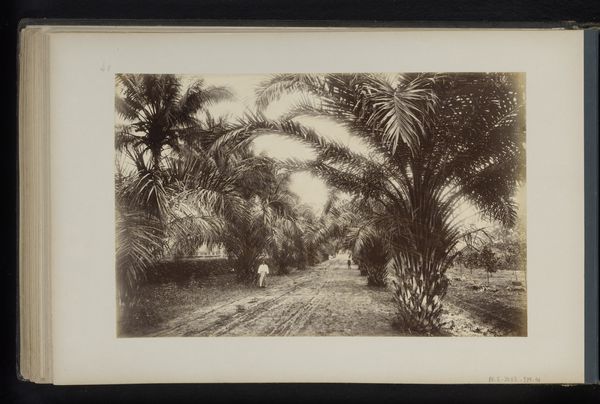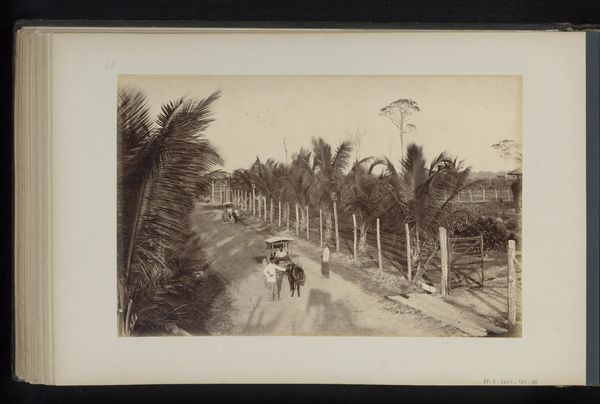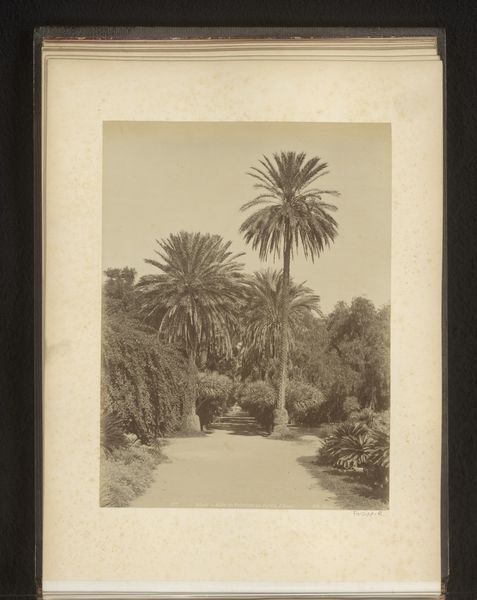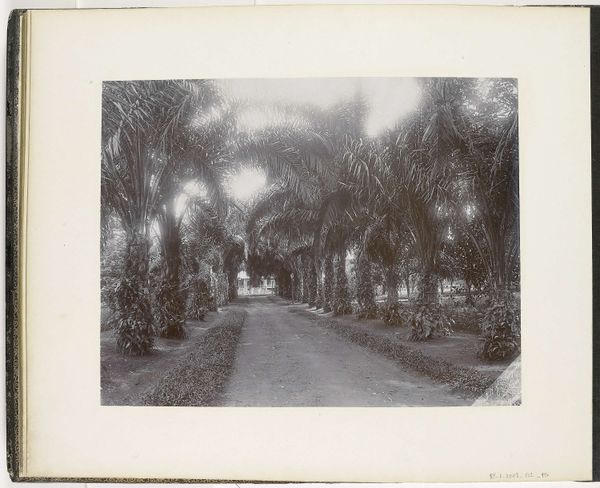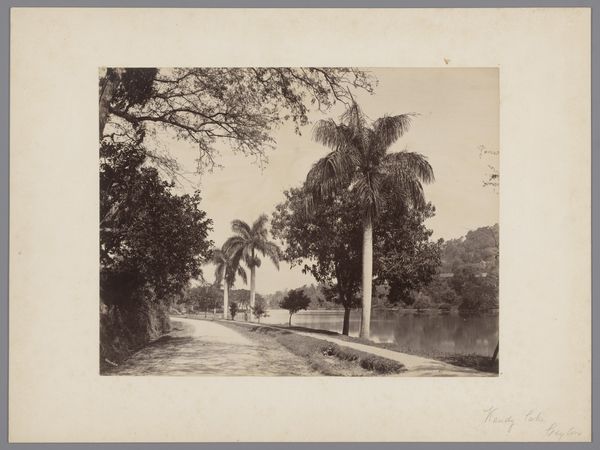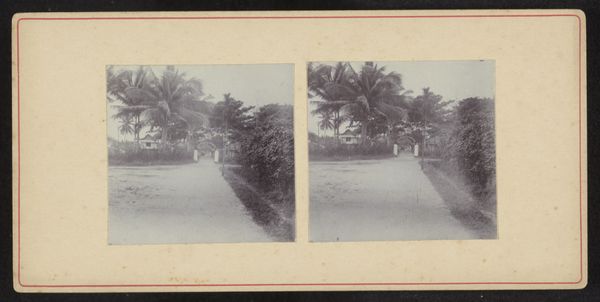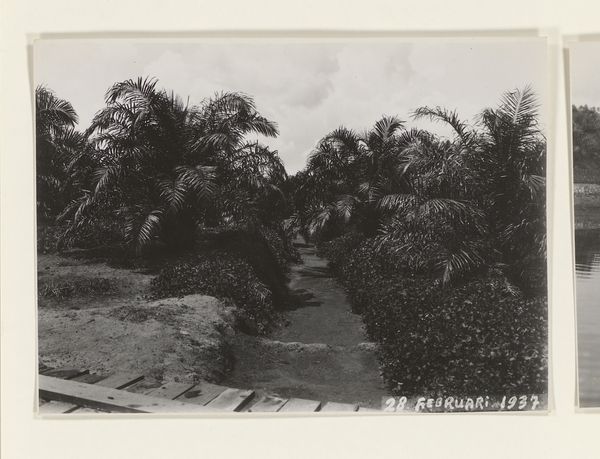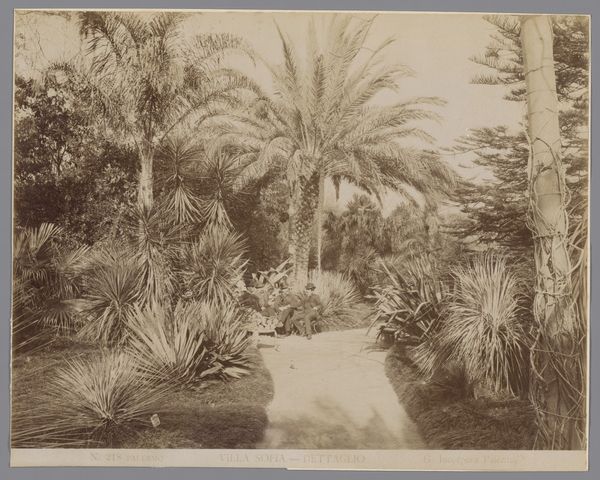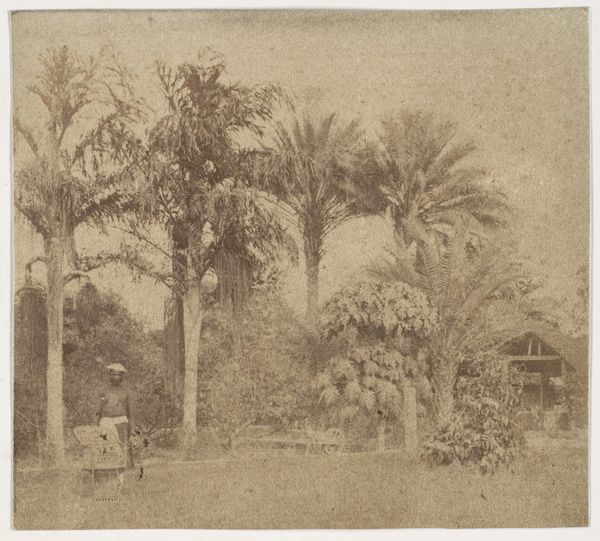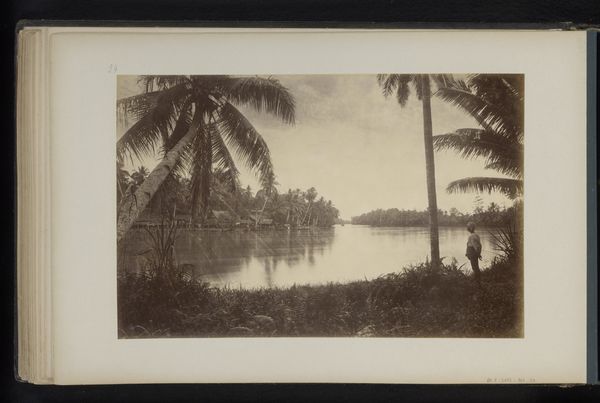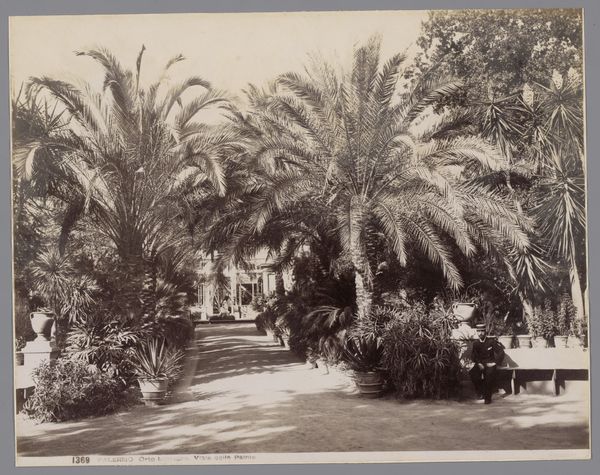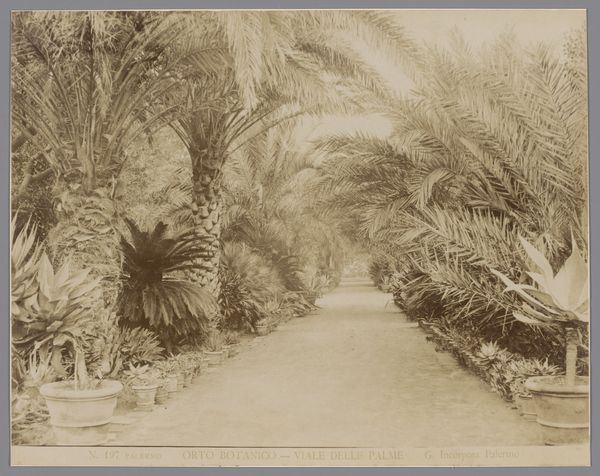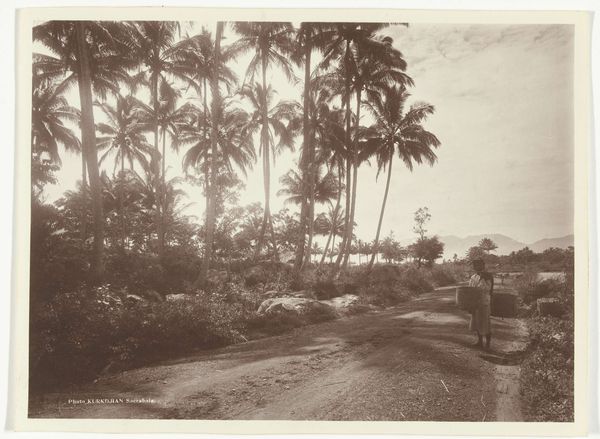
photography, albumen-print
#
landscape
#
photography
#
orientalism
#
albumen-print
Dimensions: height 265 mm, width 355 mm
Copyright: Rijks Museum: Open Domain
Editor: So, this albumen print photograph, "Laan met palmbomen in Soengei Diski, Sumatra," was created around 1890-1900 by Heinrich Ernst & Co. It’s an image of a path flanked by palm trees in what appears to be a tropical location. There’s a palpable stillness to the image; it's quiet and contemplative. How do you interpret this work, considering its historical context? Curator: The photograph’s serenity is indeed compelling, but it's crucial to consider its origins within a larger colonial narrative. What appears as an idyllic tropical scene needs to be viewed through the lens of Dutch colonialism in Sumatra at the time. The "Laan," or lane, signifies not just a path through nature, but also a pathway carved out and controlled, altering the indigenous landscape and impacting local populations. What do you notice about the presence, or rather the absence, of people in this photograph? Editor: Now that you mention it, I notice the landscape itself is empty of people; it feels almost staged. Is that emptiness symbolic? Curator: Absolutely. The emptiness reinforces a particular colonial gaze, where the land is presented as vacant and available for claiming, overlooking the pre-existing lives and histories embedded within it. Heinrich Ernst & Co., through this carefully composed photograph, may have been unintentionally promoting a romanticized view of colonial expansion. The "Orientalist" style also perpetuated a power dynamic between the colonizer and the colonized. Do you see the landscape as neutral in this case? Editor: Definitely not anymore. The "style" feels loaded now that I realize the cultural context and implications in the artist’s approach. The careful composition seems to mask a darker history. Curator: Precisely. It encourages us to interrogate how landscapes were (and still are) used to justify and normalize power structures. Art such as this urges us to confront uncomfortable histories. Editor: This really makes me think about the politics inherent in landscape photography of this era, and how crucial it is to consider the artist's perspective, even in what seems like an objective representation. I am realizing the photo carries so much social commentary. Curator: Indeed. It prompts critical conversations about representation, power, and the enduring legacies of colonialism that linger even in seemingly benign imagery.
Comments
No comments
Be the first to comment and join the conversation on the ultimate creative platform.
